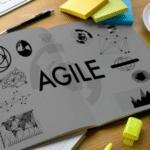
Related Articles

IT Outsourcing
RSK BSL Tech Team
May 4, 2025
|
|

Mobile Application Development
RSK BSL Tech Team
April 30, 2025
|
|

Software Development
RSK BSL Tech Team
April 27, 2025
|
|

Hire resources
RSK BSL Tech Team
April 24, 2025
|
|

Software Development
Praveen Joshi
April 20, 2025
|
|

Artificial Intelligence
Praveen Joshi
April 17, 2025
|
|

Pen Testing
Praveen Joshi
April 15, 2025
|
|

AI Tech Solutions
RSK BSL Tech Team
April 14, 2025
|
|

Software Development
RSK BSL Tech Team
April 9, 2025
|
|

Pen Testing
RSK BSL Tech Team
April 7, 2025
|
|

Software Development
RSK BSL Tech Team
April 3, 2025
|
|

Cloud Application
RSK BSL Tech Team
March 31, 2025
|
|

Pen Testing
Praveen Joshi
March 27, 2025
|
|

Software Development
RSK BSL Tech Team
March 25, 2025
|
|

Software Development
RSK BSL Tech Team
March 20, 2025
|
|

Software Development
RSK BSL Tech Team
March 18, 2025
|
Demystifying Machine Learning: From Concept to Real-World Applications
Machine learning (ML) has become a term in technology and industry, frequently linked with cutting-edge discoveries and futuristic applications, especially in the field of AI software development. However, many individuals find it complicated and enigmatic. In this blog, we’ll demystify machine learning by looking at its fundamental concepts and real-world applications that highlight its transformational impact across a variety of industries.
Understanding the Basics of Machine Learning
Machine learning is a subset of artificial intelligence (AI) that allows systems to learn from data and improve their performance over time without the need for explicit programming. Instead of following fixed rules, ML algorithms analyse patterns in data and make predictions or decisions based on those patterns.
Key Concepts in Machine Learning
- Data: Data is essential for machine learning. Quality data is critical for training models since it enables the system to spot trends and make accurate predictions.
- Algorithms: Data is processed using these mathematical models and techniques. Common algorithms include neural networks, decision trees, and support vector machines (SVM). Each algorithm has its own set of strengths and is best suited to specific jobs.
- Training and Testing: Machine learning models are trained on a dataset and learn to recognise patterns. Once trained, they are tested on new, previously unknown data to assess their performance.
Supervised vs. Unsupervised Learning:
-
- Supervised Learning: The model learns using labelled data, which means that each training example is associated with the proper output. This approach is commonly used for classification and regression tasks.
- Unsupervised Learning: The model searches for patterns and relationships in unlabelled data without explicit supervision. This approach is beneficial for clustering and dimensionality reduction.
Real-World Applications of Machine Learning
1. Healthcare
Healthcare professionals employ machine learning algorithms to detect diseases, forecast patient outcomes, and personalise treatment regimens. For instance, ML models analyse medical imaging data to accurately identify diseases like tumours. Companies are also using ML to create prediction models that can predict disease outbreaks and enable prompt responses.
2. Finance
Machine learning is used in the finance industry to score credit, detect fraud, and trade algorithmically. By studying transaction patterns, machine learning algorithms can detect anomalies that may suggest fraudulent behaviour. Furthermore, machine learning-powered robo-advisors provide tailored investing recommendations based on individual financial goals and market trends.
3. E-commerce
Machine learning improves the e-commerce experience by making personalised suggestions. ML algorithms recommend products suited to individual users based on their behaviour and interests, hence increasing sales and satisfaction. Big retailers such as Amazon and Netflix have effectively utilised ML for recommendation systems.
4. Autonomous Vehicles
Self-driving vehicles rely heavily on machine learning to analyse sensor data, navigate environments, and make real-time judgments. Machine learning algorithms collect massive volumes of data from cameras, radar, and LiDAR devices, allowing vehicles to comprehend their surroundings and function safely.
5. Natural Language Processing (NLP)
Machine learning has transformed natural language processing, allowing machines to comprehend and generate human language. NLP algorithms that learn from large text datasets power applications like chatbots, language translation services, and sentiment analysis tools.
Overcoming Challenges in Machine Learning
- Data Quality: Low-quality data can result in inaccurate models. Ensuring clean, relevant, and representative datasets is crucial.
- Bias: An unfair or inaccurate result could result from ML models inheriting biases from training data. Addressing prejudice necessitates thoughtful data selection and algorithm design.
- Interpretability: Many machine learning models, particularly deep learning models, work as “black boxes,” making it impossible to comprehend how they make certain judgments. Developing interpretable models is critical for trust and accountability.
The Future of Machine Learning
The future of machine learning is bright, with continual developments propelling innovation across sectors. As machine learning techniques advance, we should expect to see increasingly more powerful applications, such as predictive analytics in a variety of disciplines, greater automation, and improved decision-making.
Conclusion
Machine learning has progressed from a complicated notion to a critical technology capable of altering businesses and improving our daily lives. Machine learning, as part of AI-powered development solutions, provides novel capabilities for businesses to address difficulties and capitalise on new opportunities. Understanding its basics and real-world applications will help us comprehend its transformative potential. As enterprises continue to investigate machine learning, its significance will likely grow, creating new opportunities for success in an increasingly data-driven environment. Adopting this technology is no longer an option, but a requirement for remaining competitive and relevant in today’s landscape.
RSK BSL Tech Team

 Share
Share Post
Post Tweet
Tweet Copy
Copy


